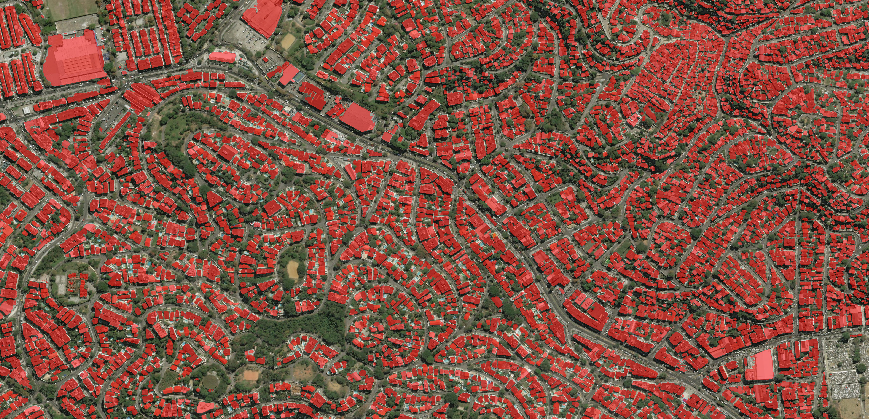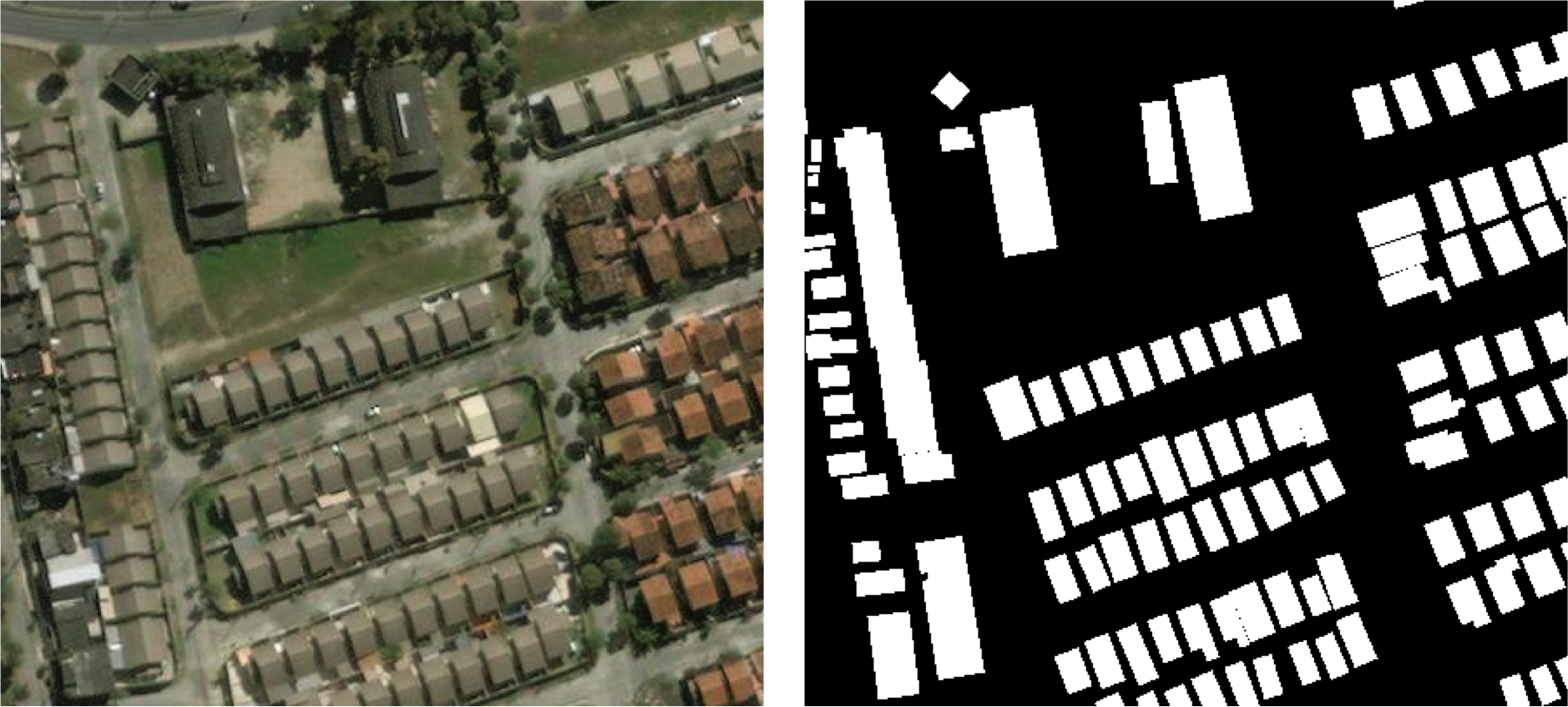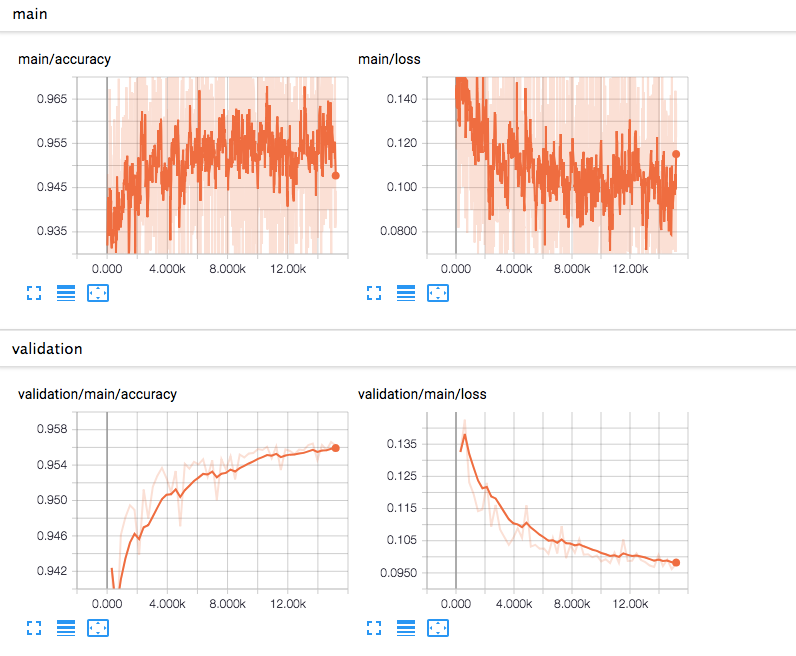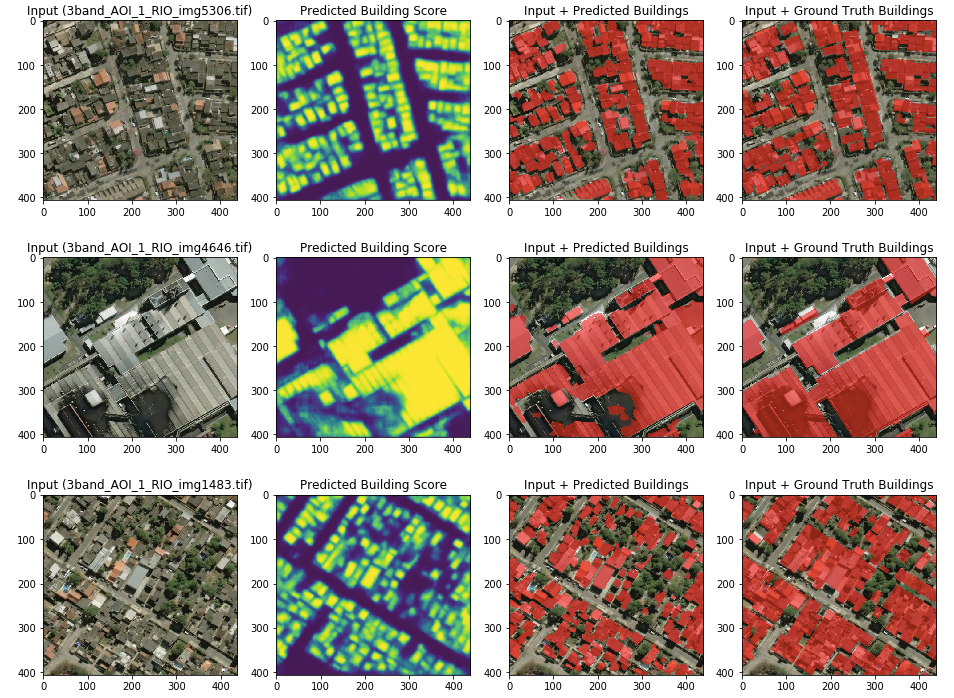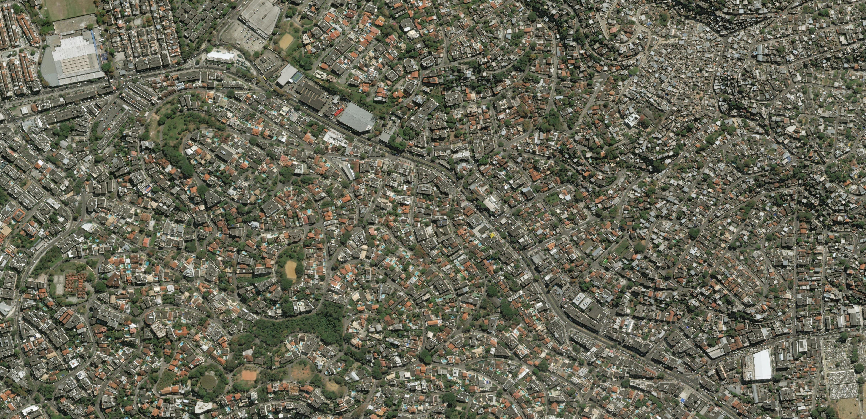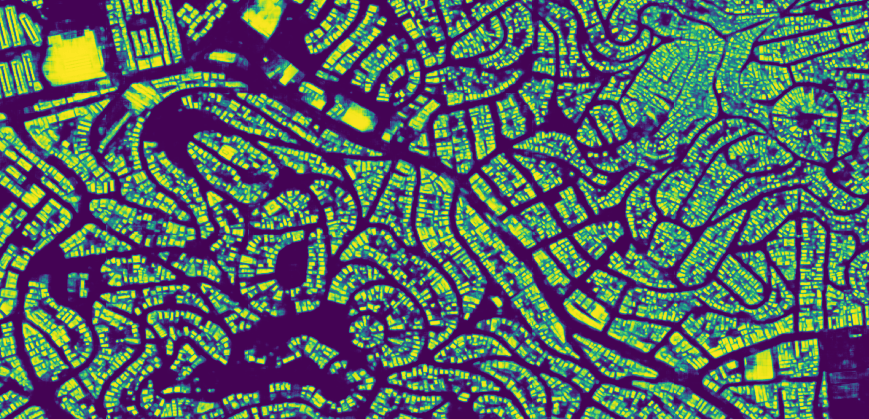This repository privides some python scripts and jupyter notebooks to train and evaluate convolutional neural networks which extract buildings from SpaceNet satellite images.
$ PROJ_DIR=~/spacenet_building_detection # assuming you clone this repo to your home directory
$ git clone --recursive https://github.com/motokimura/spacenet_building_detection.git $PROJ_DIR
Download satellite images and ground-truth building footprints (of SpaceNet AOI-1 Rio). Assuming you already configured AWS CLI to download the data from AWS S3.
$ cd $PROJ_DIR/data
# Download processed 200mx200m tiles of AOI 1 (3.4 GB) with associated building footprints
$ aws s3api get-object --bucket spacenet-dataset --key AOI_1_Rio/processedData/processedBuildingLabels.tar.gz --request-payer requester processedBuildingLabels.tar.gz
$ tar -xvf processedBuildingLabels.tar.gz
$ cd processedBuildingLabels
$ tar -xvf 3band.tar.gz
$ cd vectordata
$ tar -xvf geojson.tar.gz
# Download the Source Imagery Mosaic (3-band = 2.3 GB and 8-band = 6.5 GB)
$ cd $PROJ_DIR/data
$ aws s3api get-object --bucket spacenet-dataset --key AOI_1_Rio/srcData/rasterData/3-Band.tar.gz --request-payer requester 3-Band.tar.gz
$ tar -xvf 3-Band.tar.gz
You can find more details here.
Build docker image to setup the environment to preprocess SpaceNet dataset and train/evaluate convolutional neural networks.
$ cd $PROJ_DIR/docker
$ bash build.sh
I strongly reccomend you to use docker because you may have some troubles to install some geo-spatial data processing libraries. In case you don't want to use docker, you have to install additional dependencies described in Dockerfile.
Convert SpaceNet ground-truth building footprints from GeoJSON into building mask images.
Run docker container by following:
$ cd $PROJ_DIR/docker
$ bash run.sh
Now you should be inside the docker container you ran. Convert SpaceNet dataset by following:
$(docker) cd /workspace/src/features
$(docker) python build_labels.py ../../data/processedBuildingLabels/3band ../../data/processedBuildingLabels/vectordata/geojson ../../data/buildingMaskImages
Now you will find many pairs of satellite images and building mask images
in $PROJ_DIR/data/processedBuildingLabels/3band and $PROJ_DIR/data/buildingMaskImages respectively
like below:
Train U-Net, a convolutional neural network originaly developed for medical image segmentation.
Train U-Net with SpaceNet dataset by following:
$(docker) cd /workspace/src/models
$(docker) python train_model.py ../../data/dataSplit ../../data/processedBuildingLabels/3band ../../data/buildingMaskImages
You can check training status and validation accuracy from TensorBoard:
# Open another terminal window outside the container and type:
$ cd $PROJ_DIR/docker
$ bash exec.sh
# Now you should be inside the container already running. Start TensorBoard by following:
$(docker) tensorboard --logdir /workspace/models
Then, open http://localhost:6006 from your browser.
Evaluate U-Net with jupyter notebook.
Launch jupyter notebook by flollowing:
$(docker) cd /workspace/notebooks
$(docker) jupyter notebook
Then, open http://localhost:8888 from your browser.
Default password is passw0rd as defined in Dockerfile.
Note that you may need to modify the path to pre-trained model defined in the notebooks below.
Open this notebook.
Open this notebook to see segmentation results on tile images in test-plit.
Output examples:
Open this notebook to see segmentation results on source mosaic images.
Output examples:
